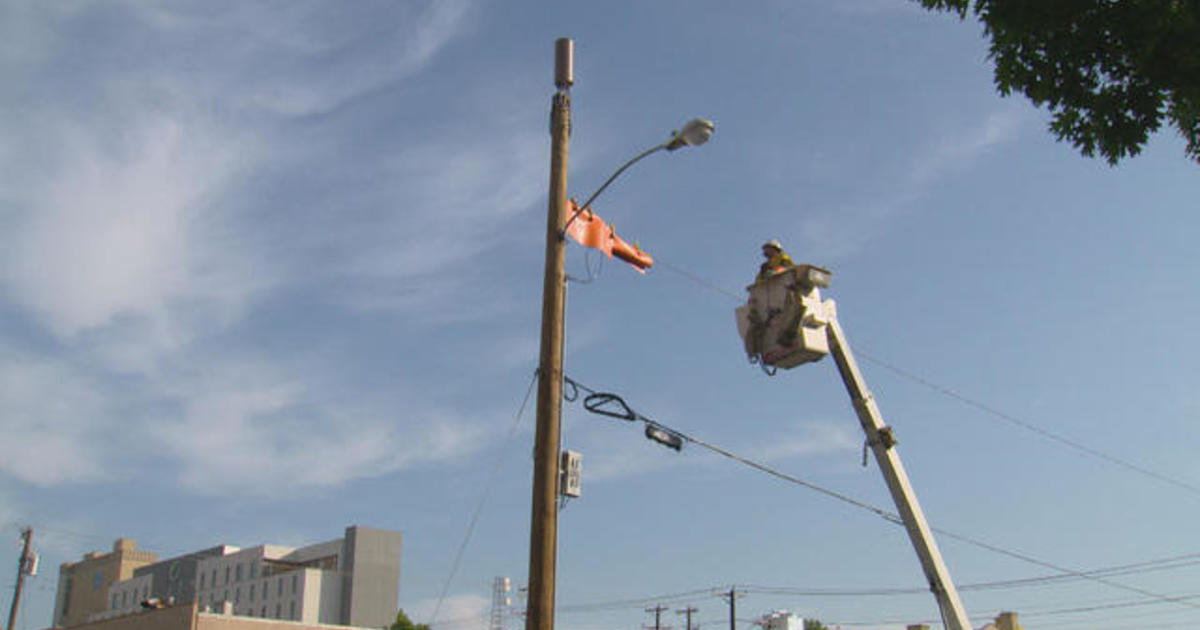What is the safest distance coming from a 5G cell Tower?

If you've ever walked through a town and spotted tiny cell towers for 5G on street light poles. what is a safe distance from a cell tower appear like tiny boxes however they're actually sending wireless signals from cellular providers to your phone.
They are replacing larger specially-designed cell towers. While they're less noticeable however, they could cause problems for people.
It is the Federal Communications Commission's Radiation Exposure Thresholds
The FCC's Radiation Exposure Thresholds define the safe limit at which one can expose to electromagnetic radiation from wireless devices. The exposure limits are based on research which prove that electromagnetic energy could be harmful to human health.
The absorption rate specific (SAR) is an indicator of the amount of radiofrequency energy absorption by tissues. It's typically 1.6 watts per kilogram, averaged over one Gram of tissue.
Since what is a safe distance from a 5g cell tower is able to transmit at higher frequencies and has the potential to cause greater energy intensity on the skin and other exposed body parts. This can lead to various possible harms, such as an increase in development of skin diseases such as dermatitis, skin cancer and cataracts.
Due to the potential for negative effects of 5G radiation, PSU has chosen to establish a general, localized maximum power density of four MW/cm2 averaged on 1cm2, but not to exceed 30 minutes, for all 5G services at 3000 GHz. This localized limit is in accordance with the maximum SAR that is spatially averaged at 1.6 W/kg averaged over 1 5 grams of body tissue, at 6 GHz.
The FCC's Maximum Exposure Thresholds
If you've ever used a cell phone, you probably know that the safest distance from the tower is around 400 meters away. This is because the transmitting power of cell towers increases drastically the farther you are from it.
While it sounds like a good idea, the reality is that people living in close proximity to towers could be more susceptible to health issues. For instance, a 2014 study in India found that residents living within 50 meters from cell towers suffered significant more health issues than those who were distance from them.
However, this study also found that people who moved to areas that were further from cell towers noticed their symptoms improve within a couple of days. what is a safe distance from a 5g cell tower have revealed that exposure to high frequencies of radiofrequency electromagnetic fields (EMFs) can lead to cancer, brain tumors and other health issues.
This is due to the fact that RF radiation, which is utilized in wireless communications, can penetrate the human body's outer layer, the skin. This is vital to be aware of since the skin functions as a protective barrier against injury to the body, infection by pathogenic microorganisms, and entry of toxic substances. It is also the largest organ of the human body. It is responsible for maintaining the integrity of other organs.

The FCC's Minimum Exposure Thresholds for the Minimum Exposure
The FCC's Minimum Exposure Thresholds rely on numerous assumptions that are not supported by scientific research. This includes the false assumption that short-term exposures to RF radiation is safe due to the limited absorption into body (i.e. thermal heating of tissue).
The assumption also ignores the greater penetration of ELF components of modulated RF signals as well as the effect on the body of short bursts generated by RF waves that are pulsed. These assumptions do not correspond with the current understanding of biological effects of RF radiation, and thus they shouldn't be relied upon for health-protection exposure standards.
In addition there is the fact that both ICNIRP and FCC are limiting the maximum limits of exposure to peak local SARs, based on the maximum frequency of absorption (psSAR) which is not a reliable dosimetric instrument to assess the amount of exposure to radiofrequency radiation. Particularly the psSAR tool is not accurate when frequencies exceed 6 GHz. Furthermore, psSAR has not been evaluated for RF radiation exposed to other agents of the environment such like sunlight. The interactions of RF radiation and other environmental agents could cause synergistic or antagonistic effects. This can lead to the risk of having adverse health consequences. For instance, exposure to RF radiation and sunlight could cause an increase in the incidence of developing skin cancer, as well as aggravate other skin conditions like acne.
